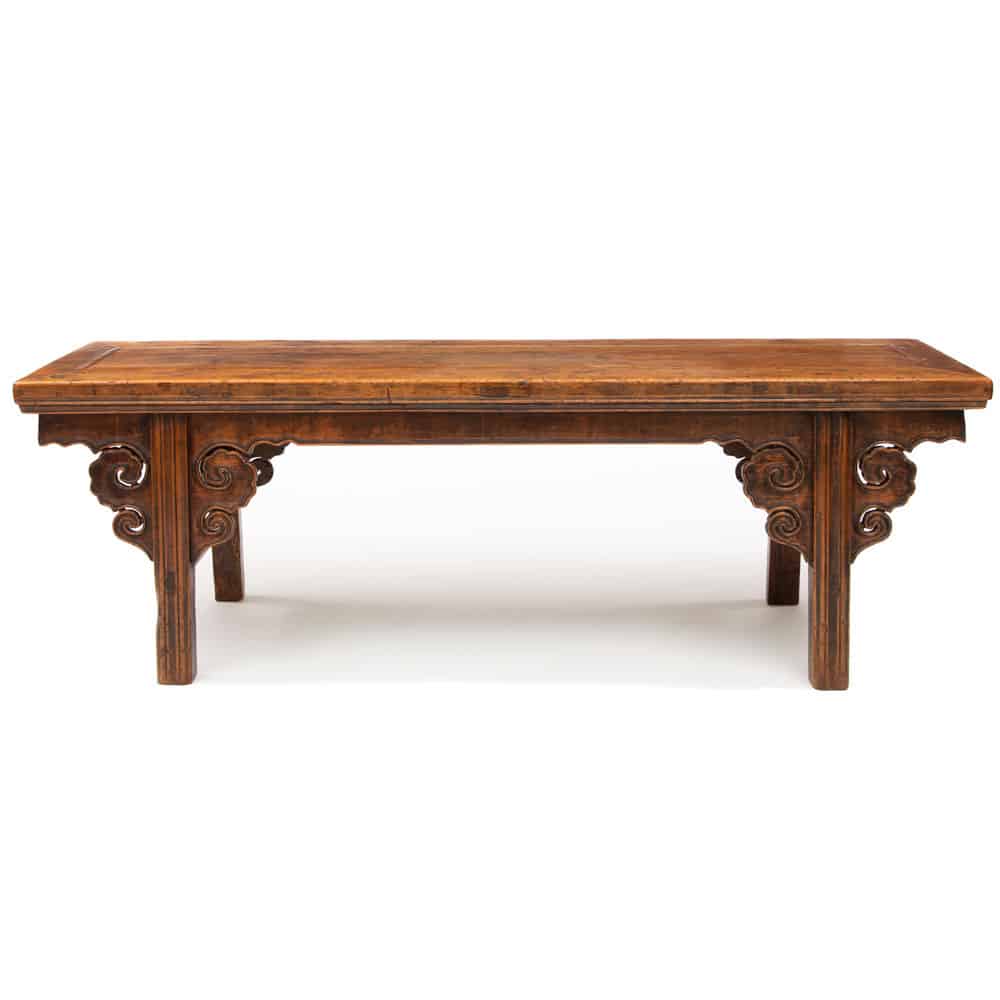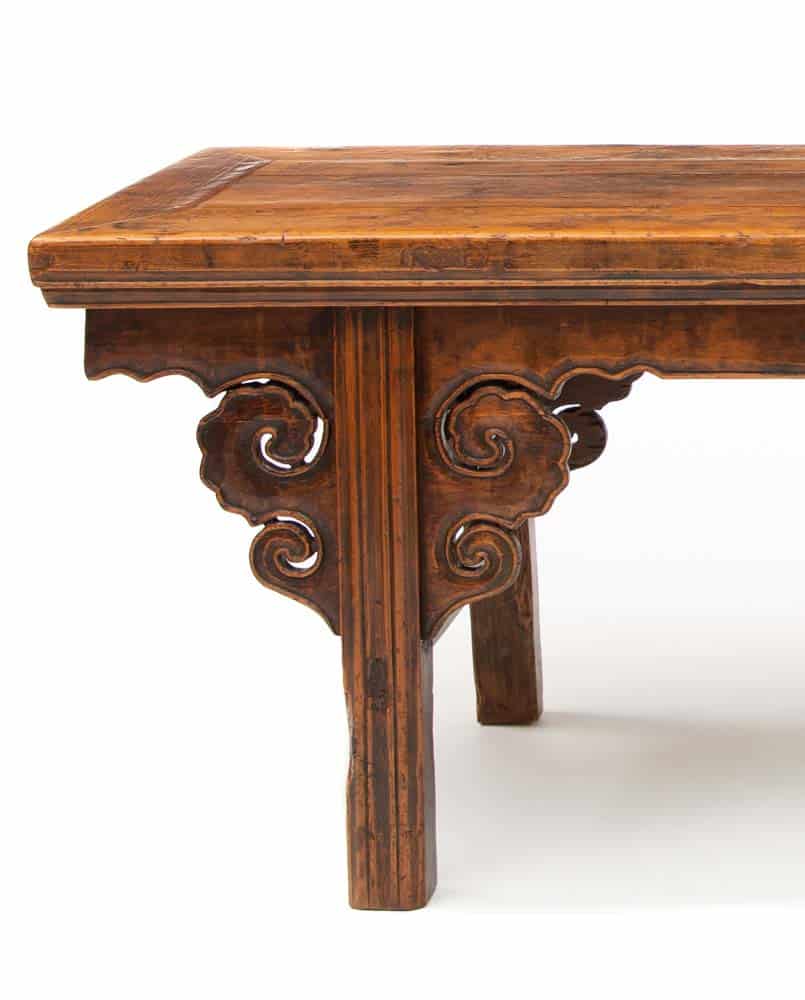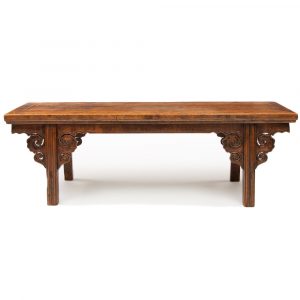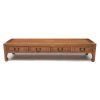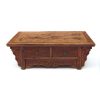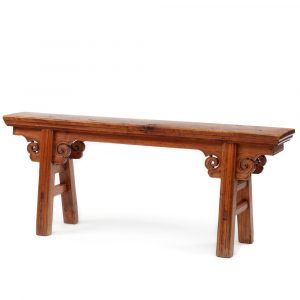Bench with double cloud-head spandrels
$2,950.00
19th century
- 159cm W x 41cm D x 53cm H
- spruce
This long bench will be a feature piece in any style of home. It has double cloud-head spandrels on both sides. The word for cloud has the same pronunciation as another word for good fortune. Clouds therefore represent a wish for good fortune in your life.
A shipping fee is calculated to deliver this item to the metropolitan areas of Brisbane, Sydney, Melbourne, Adelaide and Perth. Contact us to arrange a quote for delivery to other areas.
Sold
Make an EnquiryNote: Shipping of art is free in Australia

